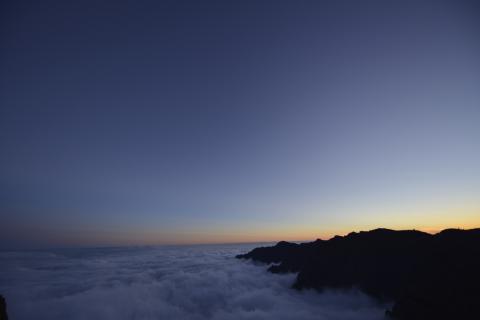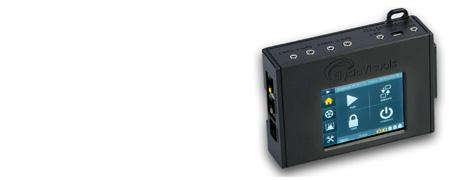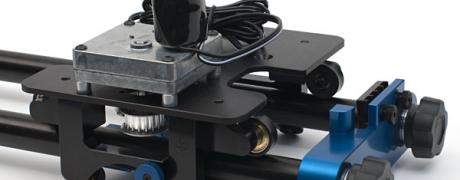RamperPro firmware 3025 is available - La Palma release
Today we released a new major firmware version for our advanced RamperPro timelapse controller. We took the RamperPro to La Palma where we had the ability to really test the unit to the edge of its' capabilities. The results of these tests have resulted to the "La Palma" release of the RamperPro firmware. We have also added many requests from our customers. Please keep sending us feature requests! We will definitely try to add them in future versions of the firmware when our customers can benefit from them. This is what is new or changed in the "La Palma" release of the RamperPro firmware.
Daylight tracking mode - automatically change exposure during a long timelapse
This is a new, exciting, feature that was is not available on any hand-held timelapse controller. In daylight tracking mode the RamperPro will both use the light sensor and the histogram mode of the RamperPro to follow changing light conditions during the day. The RamperPro will automatically change the shutter speed and ISO of your camera and it will of course create accurate XMP files that prevent any flicker in your end result. There is no need to deflicker afterwards. You can use this mode for long daylight timelapse sequences where clouds and a moving sun result in differences in ambient light. Daylight tracking mode can be seen as a mode where the RamperPro will both ramp up and down as opposed to real sunset or sunrise shoots. This feature will even give more accurate results when you use ND filters combined with Bulb mode of your camera. This is because the corrections in the XMP files will be very minimal in this mode. We will explain more on our blog why bulb mode is the prefered mode to get the best daylight ramping or holy grail ramping results.
Improved light sensor algorithm
The new light sensor algorithm now features new mathematics that result in a much faster change of the calculated "time per stop" in fast changing ambient light conditions. The "Sensor offset" setting is removed, it is replaced by a new setting called "Sensor Gain". This value is multiplied by the calculated time per stop. You can see this new setting, that is 1.0 by default, as a sensor calibration value. A value of 0.9 will make the RamperPro ramp 10% faster than calculated purely by the light sensor. We have tested this setting extensively. A value of 0.9 is probably what most users need; a value of 1.0 will give you the original performance of the RamperPro. This new algorithm will make the RamperPro ramp much faster where it is even more capable to follow a sunset or sunrise.
Define the exact runtime of your sequence
You can now set either a fixed number of images or a runtime to define how long the RamperPro should be shooting images. This makes it much easier to combine the RamperPro with a motion control device because you now exactly know how many images the RamperPro will shoot. The simulation mode will show you the number of total images when you define the length of your shoot by entering a time; this also takes into account interval ramping (interval fairing is renamed to interval ramping).
Modified ramping speed override wizard
The existing ramping speed override wizard now has an additional feature: "Stop ramping". You can set this setting when you want the RamperPro to stop changing the exposure of your images. The RamperPro will continue to take images until either the runtime is reached or when the fixed number of images until the end of the sequence is reached.
What's next - stepper motor control
The RamperPro electronics is fitted an accelerometer. This means that you can use the device as a joystick when you pan or tilt it. We already have a fully functional, very small, stepper driver that can be connected to the RamperPro. This makes the RamperPro a full blown motion controller where you setup your axis by using the RamperPro as a joystick. We are currently testing this feature on a few sliders with great success. This firmware will be released next together with the, very, affordable stepper motor add-on that fits on the back of a Nema 17 stepper motor.




